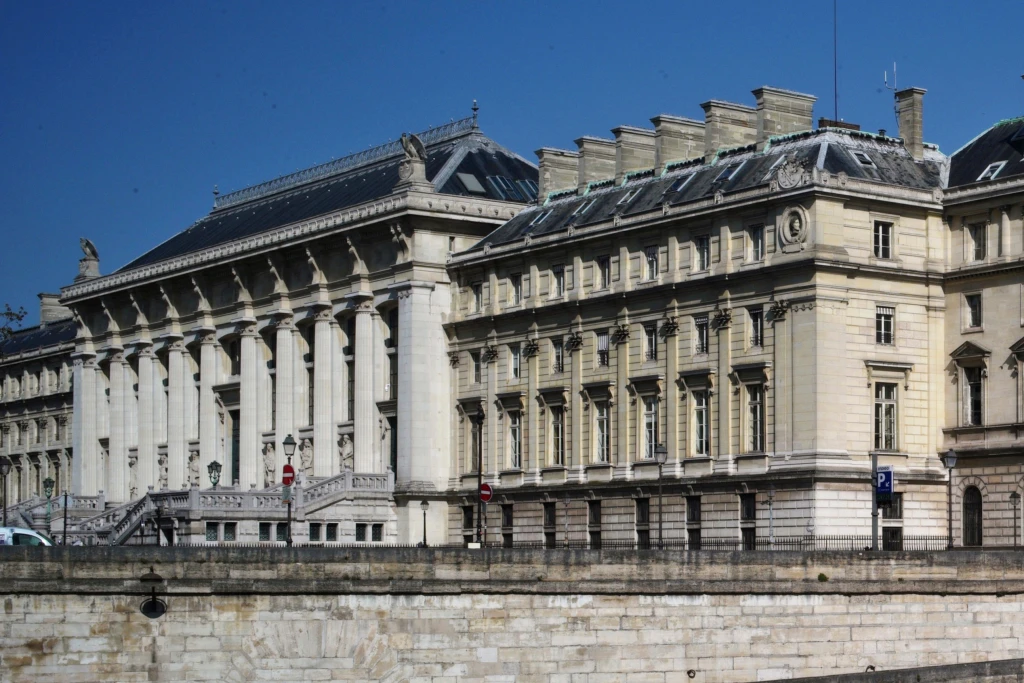
I have been to the undying convention.
I have been pressurised in a hyperbaric oxygen chamber and bathed in flickering gamma-wave light. I have had my electromagnetic field manipulated. I have taken an IV drip of green liquid that looked nearly radioactive. I have been frozen in a cryochamber (and felt amazing afterward) and baked in a one-man, zippable sauna (I didn’t). I have eaten more consecutive meals of beef than ever in my life, grinding unrefined Kalahari Desert salt over the slabs of fat and protein.
I have been told, after a scan, that I have the liver of a new-born baby (this is a good thing). I have caused a woman’s jaw to drop by telling her I once took antibiotics. I have pumped my vaccinated fist alongside RFK Jr fans and stem cell enthusiasts and piss-injectors to the pounding beats of Steve Aoki.
Welcome to Dave Asprey’s 2025 Biohacking Conference: a symposium of tech brothers, wellness influencers, psychonauts and scientists, all hoping to thwart the ravages of time with unorthodox – and often unproven – medical treatments.
The conference was held over three days in late May at the Fairmont Hotel in downtown Austin, Texas. It was a vast bazaar of speakers, ideologies, practices and gadgets, all with the express goal to help attendees “Live Beyond 180,” as goes the conference slogan, without the pesky red tape of the Western medical industry. And, while biohacking isn’t new, the rise of Robert F. Kennedy Jr’s Make America Healthy Again (MAHA) movement, which champions alternative medicine and freedom of choice over proven interventions like vaccines, has given the concept renewed zeal.
“We’re tired of people saying we need permission,” Asprey, conference organiser and self-proclaimed father of biohacking, tells me on the first day of the gathering. Instead of blindly accepting pharmaceuticals, he says, this community marches to its own holistic drum.
“We take supplements that do the same thing. We figure out we don’t need that drug because we got sunshine. Or maybe we just buy our pharmaceuticals from overseas without a permission slip and we pay a tiny fraction of the outrageous things in the US.”
He claims that biohackers are at the forefront of MAHA – but that it’s not about partisanship.
“We’re leading the charge on making America healthy again and most biohackers are pretty much apolitical. Because having incredible energy in a sense of peace, in a sense of control of your own destiny, I don’t think that’s partisan.”
Biohacking is a big tent, combining Silicon Valley technology, Burning Man spirituality and health libertarianism. If anything unites this crowd, it is a distrust of the medical status quo – particularly the pharmaceutical industry – and an appetite for tech-heavy alternatives. Think folk medicine powered by AI. The movement started gaining major traction around 13 years ago when Asprey began organising a loose-knit band of health fanatics at his annual conferences. But its roots arguably go back much further.
“Where [biohacking] started 150 years ago,” says investor and so-called ambassador of biohacking Nick Zaldastani, “was the snake oil salespeople.” In the mid-1800s, Chinese labourers on the Transcontinental Railroad first introduced their white counterparts to the anti-inflammatory oils of the Chinese water snake. It was the inert tinctures sold by white copycats that gave rise to the pejorative “snake oil.”
These charlatans, Zaldastani says, “would go around and move from city to city because the minute people found out it did shit – sorry about the French – they were chasing after them.” The resultant struggle with medical authority, the sense of persecution and doubts on legitimacy plague the biohackers to this day.
In these circles, autonomy is gospel. But if there is a preacher to this sermon, it is Asprey. Grinning cut-outs of him greet you at the tops of escalators; his products stock the ad space in conference pamphlets. Patrons roam the halls in his signature anti-blue-light glasses, the auburn lenses making their eyes look like flies, trapped timelessly in amber. Asprey’s personal goal is to live to 180 years old – “50 per cent better than our current best,” he clarifies, referring to the oldest person ever recorded at 122.
And he is working on it, hard. He claims to have spent $2.5 million of his multimillion dollar empire – generated largely by his bulletproof coffee brand and diet plan – on reversing his age via a specialised diet, rigorous exercise, a torrent of supplements, countless stem cell treatments, baths in frigid ice water and shimmering red light and injections of his own filtered urine as allergy therapy.
Whatever myriad of elixirs Asprey is using, it does, on a superficial level at least, appear to be working. At 52, he looks great, standing out in a conference awash with obvious botox and plastic surgery. In his slicked-back hair, punk leather outfits and signature glasses, it’s hard to believe the picture he paints of his former self, resembling “the 300-pound computer hacker from Jurassic Park.” He seems to have even achieved a younger man’s temperament: rapping “I’m a Little Teapot” onstage; dancing shirtless and gawky before the masses during Aoki’s set, surrounded by a coterie of women, one of whom attempted to flash him, unhooking her bra before being whisked offstage.
For a man desperately trying for timelessness, Asprey is certainly a man of the times—a wealthy entrepreneur at the head of a populist movement that vehemently opposes government regulation. He shares his de facto leadership of the biohacking sphere with a few other rich renegades, most notably Bryan Johnson, the venture capitalist whose Blueprint Protocol makes Asprey’s centenarian goals look quaint. Johnson aims for immortality outright – “DON’T DIE” screams his own movement’s slogan – and has even vampirically infused himself with his own son’s blood in the quest for the fountain of youth.
Not everyone at the conference strives for Asprey-Johnsonian extremes. Then again, not everyone at the conference is in their tax bracket. Some simply want to age with grace and vim, not blunted by medication or hobbling through hospice. In a true embodiment of the conference’s “Beyond” theme, some even have plans grander than this carnal plane. Attendee Joni Winston, who runs a wellness centre in Costa Rica, tells me she is either 68 or 52, “depending on which calendar you use.”
At age 60, she started counting backward, so that when she reaches her intended 120, she can claim the nirvanic age of 0. “I want to make as much progress in this life as I can,” Winston says, “so that when I die I can go to a different dimension and not have to deal with this 3D matrix shit.”
In the meantime, though, she’d still like to look good. “I’m not devoid of vanity. Spiritual evolution is my primary goal, but I’m still human, you know?” Others are simply afraid of the slow, painful crawl through old age and, of course, death itself. Melanie Avalon, 34, host of a biohacking podcast, tells me: “I’ve been haunted by the concept of aging since I was 12 … And ever since then I’ve been searching for ways to stall the aging timeline … I don’t know if immortality is possible, but if there is a way to practically move toward that, it’s biohacking.”
If the practice sounds inherently self-interested, that’s because it is. By definition, biohacking requires profound interest – often supplemented by large investments of time, energy, and capital – in the self. A certain Ayn Randian individualism rang through the halls of the Fairmont. But there was also a highly communal, near-revolutionary air here: a fervour to spread the good word, to empower the masses, to enact a grand subversion.
“The biggest blessing of Covid might be an erosion of trust in corrupt authority,” Asprey tells me. “We have the highest healthcare costs in the world and one of the worst outcomes for any developed nation. So the only logical conclusion is that someone’s stealing … and we know who it is, right? It’s the pharmaceutical companies.”
Since November, then, the biohackers have seen a bright new dawn. With President Donald Trump’s re-election, RFK Jr’s subsequent appointment as secretary of Health and Human Services—people here refer to him as “Bobby,” affectionately, like an old friend – and the initiation of MAHA, years of work have come to fruition. MAHA’s agenda legitimises the biohacking ethos: that we must curb the pharmaceutical industry’s influence on public health policy and research, that we are all overmedicated as a result, that self-governance over health is paramount.
RFK’s antivax crusade has set off alarm bells across the scientific community – most recently, he gutted the Centre for Disease Control’s vaccine advisory committee and appointed several new vaccine sceptics, just as the US is seeing a resurgence of measles outbreaks. But for the biohackers, it is an almost mythical underdog moment. David, at last, has been armed with his sling across the pit from Goliath.







